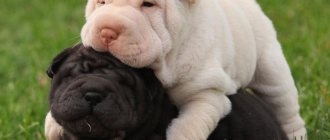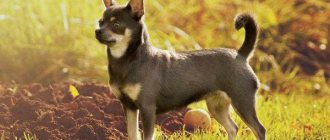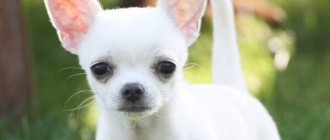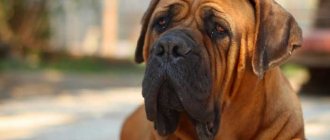The Chihuahua is an excellent companion dog. It is considered the smallest in the world. The name of the breed comes from the state of Chihuahua in Mexico. These are compact pets with a lively nature. Despite their size, they are very brave. Suitable for home use only and require special care. For those who are in doubt about whether to get such a dog or not, it will be useful to read the article below, where we will tell you everything about the care and maintenance of a pet in the house.
Puppy health
When purchasing a puppy, you must make sure that it is healthy. Outwardly, this is as follows: the puppy runs quickly (except for super tiny options), he has an excellent appetite, clean eyes and ears, smooth and shiny coat. The puppy should not cough or sneeze. When examining your puppy's teeth, pay attention to the bite: it should be scissor-shaped or with a very slight underbite. As for the number of teeth, the following must be taken into account: there should be all the canines, and preferably 12 incisors (the absence of any of the incisors is possible).
One and a half to two month old Chihuahua puppies are very small, but very active and funny. When purchasing a puppy, consult with the breeder on how to care for the puppy and STRICTLY follow his recommendations.
What toys are needed
When caring for a Chihuahua dog, you need to remember about toys. The best ones are squeaky ones and ones that can be chewed (they are especially useful for puppies). They should not be too small so that the dog swallows them. Must consist of rubber or latex, without metal or plastic parts. An important nuance: you cannot pull a toy out of a dog’s teeth - this can ruin his bite.
Feeding the puppy
At first, after the puppy is taken from home, you need to feed him his usual food. It is easier to feed a puppy dry food than natural food. Dry food is completely balanced, containing the optimal amount of vitamins and minerals that a puppy needs for full development and growth. The following brands are well suited for feeding a puppy: Brit, Pro Plan, Acana, Orijen, Bosch, Magnusson, Monge, Xills, Royal Canin (Royal Canin), Josera (Yozera).
Veterinarians recommend soaking dry food for puppies in a small amount of slightly warm water to avoid gastritis and overeating. When food is soaked, it swells and the dog eats less of it than dry food. Once a day, the puppy is given cottage cheese with milk (or kefir).
There is an opinion that by limiting the puppy's nutrition during growth, it is possible to achieve a lower weight in an adult dog. However, experts say that this will bring nothing but harm. Poor feeding will lead to the formation of poor muscles and will affect health.
After the puppy adapts to the new place, you can gradually switch it to a different diet. You can feed your puppy natural products. The main diet is lean meat (beef, turkey (without skin), rabbit) boiled and finely chopped. As a side dish - well-cooked rice, buckwheat, rolled oats. Once a week - half a boiled yolk. From time to time, include fish in your puppy's diet, but only ocean fish, with the exception of pollock and fish with a high fat content (capelin, etc.). From fermented milk products - kefir, cottage cheese, fermented baked milk, cheese (finely chopped).
Small dogs love fruits (all are healthy, especially apples and bananas). Vegetables are better digested when stewed or boiled. In their raw form, they will be better absorbed if you grate them and add ½ spoon of vegetable oil. Carrots are useful; the carotene they contain makes the coat color brighter and restores pigmentation.
Food should always be fresh and slightly warm. And, of course, you have to let him chew on beef bones and cartilage. There should always be clean water near the puppy's house. A 1.5-2 month old puppy needs to be fed 5 times a day.
What you should absolutely not give your puppy to eat: pork or fatty meat, river fish, candy and sugar, pasta, legumes, spices, nuts, sweet bell peppers, onions, fresh cabbage (with the exception of healthy sauerkraut). Instead of meat, you cannot give sausages (sausages) or smoked or salty foods. Their composition is far from meat, and various additives are very toxic for dogs.
Training and education
Chihuahuas are warriors by nature and require good training and a strong hand from the owner.
Raising a Chihuahua puppy begins with establishing rules of behavior in the house. Although he is small in size, he is not allowed to sleep in the household's bed, eat from the table or beg, bite or bark.
A Chihuahua puppy must remember its name. This can be achieved in 1.5-2 months if you often talk to the puppy, call him by name while feeding, bathing and walking. Chihuahuas will also benefit from basic commands: “near”, “no”, “sit”.
Toilet training
Chihuahuas have been around humans for several centuries and are accustomed to living at home.
They tolerate walking, but can also live peacefully without going outside. To do this, purchase a dog litter box or construct an impromptu toilet from rubber and soft baby diapers.
The puppy is taught to use the outdoor toilet from the moment regular walking begins. A Chihuahua puppy is scolded for puddling in the house, and rewarded with treats and praise for defecating in the yard. You can fence off a space in the room with furniture or an aviary net. Diapers are placed in such a booth so that the puppy does not ruin the floors.
Vaccination
- If you suspect that the puppy has worms (riding on his butt or causeless mild vomiting before eating), immediately begin deworming (Drontal Junior (suspension), Pirantel suspension, “Prasicide-suspension”). An adult dog needs 1 time every three Give deworming medicine for a month, to the puppy at the ages of 4, 8 and 12 weeks, and then at the ages of 4, 5 and 6 months. Give your puppy or adult dog activated charcoal 2 hours after taking anthelmintic medications.
Has the puppy been vaccinated, and if vaccinated, when and with what vaccine? If the puppy is not vaccinated, then a week after its purchase, deworming is carried out and another week later the first vaccination is given with the NOBIVAK vaccine. Before vaccination, you can drop Gamavit (sold at a veterinary pharmacy) into the puppy’s mouth. The dose of the vaccine does not need to be reduced, as many people think, because of the size of the small dog. After vaccination, you need to ask the veterinary hospital: when to give the next vaccination and strictly follow the schedule (if the puppy is healthy).
It is advisable to vaccinate puppies for the first time at the age of 9, and for super-small ones at the age of 10-11 weeks. You cannot start vaccination during the period of teeth change (age from 3.5 to 6 months).
Pros of the breed
Cute Chihuahuas are simply irresistible. Among the advantages of their breed:
- Miniature. The owner can carry the dog in his bag, and the daily food requirement is much less compared to other breeds.
- Pliable character. Such pets do not need to be walked in bad weather, but instead are trained to use a litter box at home.
- Good health. Despite their external fragility, these dogs have a good immune system. On average they live at least 16-19 years.
- Easy to care for. A Chihuahua will not cause much trouble - even a school-age child can be entrusted with caring for it.
About the first steps together
On the first day, do not tire your pet with excessive attention. Let him sniff and get acquainted with his new home. In 1-2 days he will get used to it and will happily run around the house, accompanying you. The puppy's house should be in a warm corner without drafts. In the kitchen you can additionally place a bed.
You must be extremely careful when handling a puppy. Be careful not to accidentally step on it, hit it with a door, or catch a cold in a draft. Do not take it on the sofa or bed. He will learn to climb on and off the sofa himself. For super tiny puppies, when they grow up, they place a cushion on the floor of the sofa or give them steps.
You should be extremely careful when holding the puppy in your arms, as often the puppy will vigorously struggle and may fall (the breeder must show how to hold the puppy - with a grip under the chest).
Nutrition for the breed
If you are wondering what to feed your Chihuahua, you should know what you need to include in its diet:
- Protein of animal origin – that is, meat products.
- Vegetable protein - vegetables, fruits and cereals.
- Vitamins, minerals and fats.
You can give your dog premium industrial food with the addition of beneficial microelements.
And most importantly, you should not feed your Chihuahua spicy and fatty foods - this will harm the baby’s body.
In addition, food should not be too cold or too hot.
How to litter train a puppy
Small dogs become toilet trained fairly quickly. In order to teach your puppy to pee and poop in the place where you want, you need to lay several newspapers or a special disposable or reusable diaper on the floor near his house. Usually the puppy begins to walk on them himself. When the baby is about to do his business, and most often this happens after sleep and food, he must be quickly picked up and taken to the newspapers or to the diaper.
Subsequently, when the puppy gets used to doing his business on a newspaper or diaper, you can put it on the tray and accustom the puppy to the tray.
What to take with you on a walk
Some owners are sure that decorative dogs are not dangerous to others, because they are so small. This opinion is wrong - miniature pets can strongly compress soft tissues with their teeth, and therefore their bites are quite painful.
When going for a walk with your Chihuahua, be sure to take a leash with you. Whether it will be a harness or a collar - the choice is up to the owner. Many people find a leash more attractive, while others find a harness more comfortable.
If you are going to walk in crowded places where children will play, it is better to take a muzzle with you. Even if the owner knows that his pet is friendly and balanced, the people around him do not know this.
In hot weather, bring a bottle of drinking water for your dog. If you are planning a long walk, keep your animal busy with toys for outdoor fun.
How to care for a puppy
Caring for a puppy is simple and enjoyable. This applies to both long-haired and smooth-haired dogs. Comb your friend once every few days. Check your puppy's teeth regularly. During the change of teeth, the primary incisors and canines most often do not fall out on their own and you need to see a doctor to remove them. It is necessary to teach your puppy to brush his teeth from an early age. For cleaning, it is good to use special toothbrushes that fit on your finger (Trixie has two of them for teeth and gums) and Cliny tooth gel or Trixie toothpaste. You should also regularly purchase special bones and treats for cleaning your teeth at the pet store. For example, the TitBit company.
Keep your ears clean. It is not recommended to clean your ears with cotton swabs. A few drops of “Ear Lotion with Phytocomplex of 25 Healing Herbs” from Cliny are dripped into the ear and massaged at the base of the ear (instructions are on the package).
Take care of your eyes. Pet stores sell special eye lotions “Calendula” or “Chamomile” - Trixie Eye Care Lotion. Tear stains on the coat should follow the shape of the eye.
Sometimes only one eye may water, it seems not much, but a line appears under the eye. Then you can buy Bars eye drops at a veterinary pharmacy or consult a veterinarian. Purulent discharge from the eyes is an indicator of a serious illness.
Groom your under-eye hair. Use under-eye wipes such as Cliny. If necessary, for example, for white and light cream dogs, we can recommend Trixie Tearstain Remover - Tearstain Remover Lotion.
Once every two to three weeks, trim your pet's overgrown claws with a special nail clipper (it looks like small scissors). If your Chihuahua puppy resists strongly, it is better to swaddle him, leaving one paw outside. After trimming the claws, the puppy's paw should look elegant.
You should only bathe your puppy when necessary. Do not bathe your puppy if he is under two months old. When he starts to grow up, get more naughty and, accordingly, get more dirty, don’t rush to immediately drag the prankster to the bathroom. After a muddy walk, wash your puppy's paws or wipe them with wet paw wipes, such as those from Cliny, and comb out the fur. Detergents destroy and remove the protective oil layer on the skin and coat. This layer protects the skin from moisture and pollution, protects against hypothermia and the penetration of microbes.
When bathing, it is advisable to use professional shampoos for puppies, for example, from Trixie, Hartz, Gotlieb, Doctor Vic. For long-haired and smooth-haired puppies and different ones, there is also a shampoo for puppies with very delicate skin. (For example, oatmeal shampoos). The most gentle shampoo option is dry shampoo, for example, from Trixie. It is similar to talc and can be used frequently.
It is better to bathe puppies after the last walk. You should not bathe immediately after eating. Warm water, make sure that water does not get into the ears, do not pour water directly on the head (dilute the shampoo in warm water), on thoroughly wetted hair, without spreading it, so that the shampoo does not get on the skin.
Let the puppy shake himself off and lightly squeeze out the water with a towel on the ears, paws, and body. When the puppy's fur dries a little, you need to let the puppy run around so that he is in motion. Blow drying is contraindicated for puppies with delicate skin and fur.
After bathing and drying, praise the puppy and reward him with some treat.
In addition, you should not wash your dog 2-3 days before vaccination and for two weeks after it. It is preferable to wash an adult dog 1-2 times a year.
Make sure your pet doesn't have fleas. Anti-flea collars or drops on the withers have proven effective against fleas and ticks. From spring to autumn, treat the dog house.
To walk or not to walk
Immediately after purchasing a puppy, it is not recommended to walk him outside until he gets comfortable and has had all his vaccinations. The start of walking the puppy depends on the time of year. It’s good to start walking in the summer, when the sun has dried the ground and warmed it up. By the time you start outdoor walking, make sure to buy an anti-flea collar or drops.
If you walk your dog outside, it is advisable to wipe its paws after the walk with paw wipes. For the cold season, the puppy needs to purchase a blanket or overalls and shoes. If the puppy does not want to wear shoes, it is good to use paw wax, for example.
Walking outside is very beneficial. But here you need to take into account the bold character and temperament of your dog. Therefore, to keep your dog out of trouble, walk him on a LEAS. Natural curiosity can also play a cruel joke on a brave little creature. In my practice, there was a case when the baby was intimidated by crows.
In any case, the dog must be trained to the tray so that you have the opportunity to choose.
A tiny puppy (but not a toy) does not require much space in the house,
Difficult care and large amounts of food,
You can walk with her whenever it’s convenient,
Take it on trips.
And just love.
Walking clothes
If you want to walk your dog in winter, then you cannot do without warm clothes: according to its characteristics, the Chihuahua is the smallest breed in the world, which means that it is almost constantly in the cold air zone, and besides, it does not have its own energy to warm the body. a lot of. A good winter outfit would be a jumpsuit or jacket. Paws need boots.
In the off-season, raincoats and thick suits will be useful for protection from wind and rain (short-haired dogs especially need them). But in the summer the dog does not need clothes. Although light outfits look fun, they bother your pet. Many members of this breed frankly love to “dress up,” so there is usually no problem with trying to shed clothes. The main thing is to check that the outfit does not hang loose, rub or squeeze your pet’s body.











